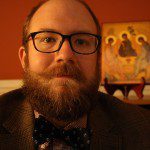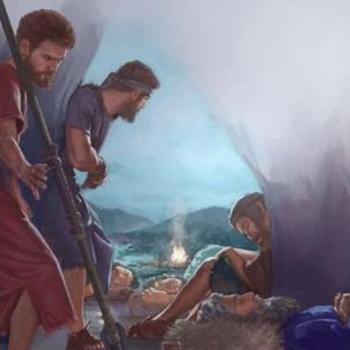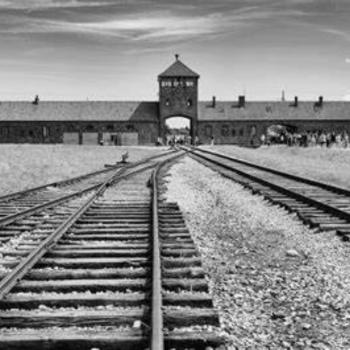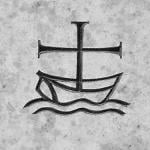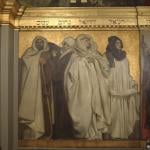He saved us and called us to a holy life,
not according to our works
but according to his own design
and the grace bestowed on us in Christ Jesus before time began,
but now made manifest
through the appearance of our savior Christ Jesus,
who destroyed death and brought life and immortality
to light through the gospel. (2 Tim. 1.8b-10)And he was transfigured before them;
his face shone like the sun
and his clothes became white as light. (Mt. 17.2)
I have always been interested in the unseen. I’ve always wanted there to be more than I can see or smell or taste or touch or hear. That’s why I was overjoyed to be asked to write on the Transfiguration, the unveiling of Christ before three of his disciples. For a moment they get to see him as he really is, they get to see the divinity and humanity in him, united, unconfused, and inextricable. Christ unveiled, what a terrifying, beautiful thought.
One scene that has often attracted me in Tolkien’s The Lord of the Rings is when Frodo recounts seeing Glorfindel to Gandalf:
“‘I thought I saw a white figure that shone and did not grow dim like the others. Was that Glorfindel then?'”
“‘Yes, you saw him for a moment as he is upon the other side: one of the mighty Firstborn. He is an Elf-lord of the house of princes.'”
Frodo is wearing the ring when he sees this sight. He has passed through a kind of veil (which is what makes him invisible to the others) and is able to see with another kind of sight. He is able to see, thanks to the Ring, through the veil. Of course, the ring is evil and while it unveils some things, it veils others. While Glorfindel becomes clearer in some ways, Frodo cannot recognize him. The world of physical things becomes a little hazier to a wearer of the One Ring.
Not so with Christianity; we are an unveiling religion. This is what I love about the passage from Paul that goes with today’s Gospel. Before the coming of Christ the cosmos was still partially veiled. Some of the veil had come down as God began to reveal himself to the Ancient Hebrews, but there was still cloud and mystery, the Son had not been made manifest, nor had the Spirit. But with the Advent of Christ the veil has been pulled away, the cosmos has been laid bear and we are called to live a holy life.
And yet, so often we still cannot see. So much still seems veiled, even the Person of the Spirit has not been made as clear to us in revelation as the Father and Son have. But more than that, we look at the world and see less than we ought. Why? Why is it that Peter at the moment of the Transfiguration (in Luke’s retelling) is described as not knowing what he was saying?
The most obvious answer, and in many ways the most Lenten, is sin. We do not see things correctly because our sight has been perverted by sin both our own and that we share in original sin. I may long to see rightly and I have been given glimpses, but they are just that, glimpses. My sin keeps me from seeing as I ought and it isn’t until Christ returns that I will always be able to see as I am seen. Things are not hopeless, I still have the glimpses, and I am called to live a holy life, but so many days feel like a drudgery. Even when I am granted a glimpse, it can feel like I still see it through the haze.
And yet, we are called to live a holy life, not only called, but designed. We are designed from before all ages to see the cosmos through the light of the Transfiguration. And we need to help one another do so. Failure to do so will leave us impoverished, seeing with only a half-sight, not even as good as that of the ring-wraiths or the demons who know goodness when they encounter it (even if it causes them pain and terror, for being evil in the presence of the source of all goodness cannot be pleasant, not at first). Yes many days bread and wine will be just that, bread and wine. But when seen in the right Light, when seen with the right eyes, we can be reminded that under the right circumstances, while they still appear as bread and wine, they are body and blood of our Lord. And this is our joy. This is the joy of the Transfiguration, this is the joy of Lent. Lent becomes a time to clear the scales from our eyes, to be transfigured by that same Light that transfigured our Lord. May we have eyes to see it.
***
David Russell Mosley has a PhD in theology, smokes a pipe, drinks scotch, writes with a fountain pen, and does all these things decidedly un-ironically. He writes over at Letters from the Edge of Elfland.

